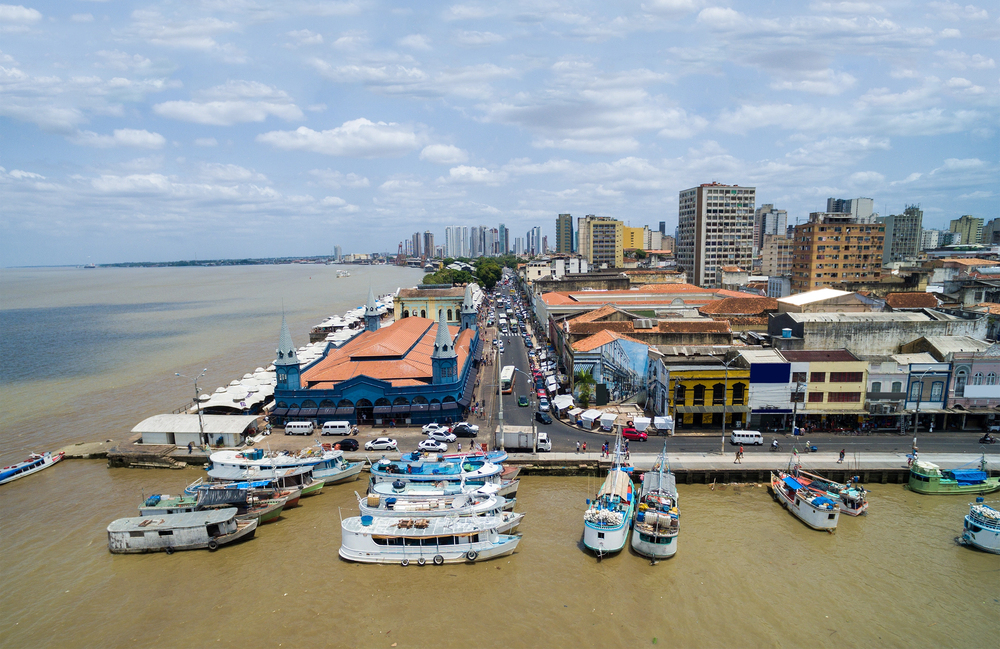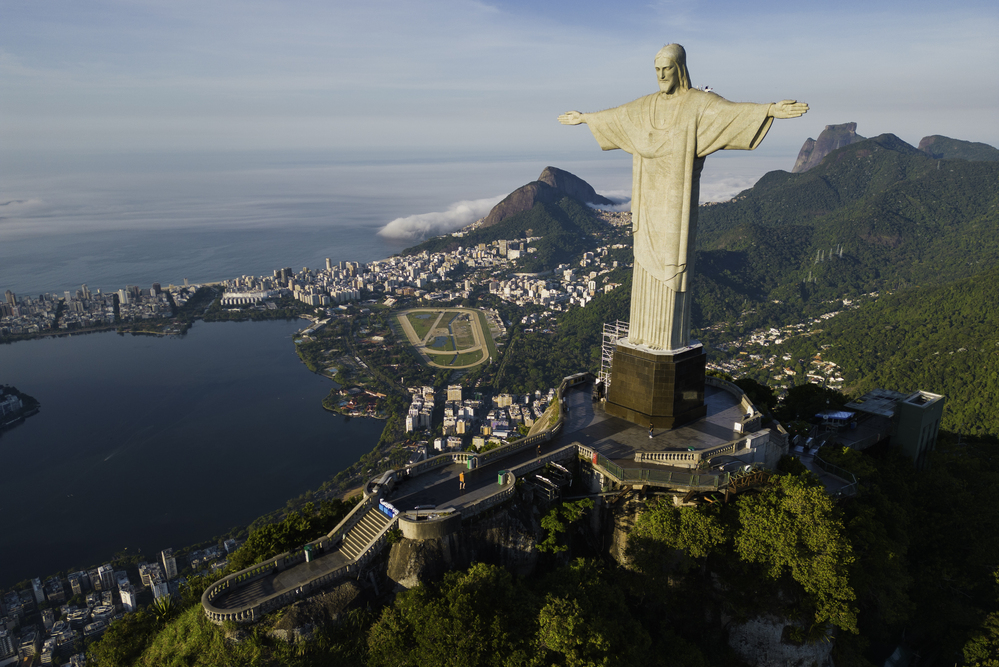Belém do Pará is a unique destination in Brazil, where Amazonian culture blends with Portuguese colonial heritage. Known as the “City of Mango Trees,” Belém enchants visitors with its tree-lined streets and remarkable cuisine. If you’re planning your next travel destination, come see how much Belém has to offer during your stay in the city. There will be no shortage of things to do in Belém, and of course, I’ve prepared a rich list for you to enjoy.
Belém
First of all, let me show you some important information about Belém so you can get to know a little about this wonderful city and have a safe trip. This way, you will make the most of your visit to the city.
Belém do Pará: History and Colonization of the Gateway to the Amazon
Belém do Pará was founded on January 12, 1616, by the Portuguese, who sought to secure dominance over the Amazon region and ward off foreign invaders. The city was born with the construction of the Forte do Presépio, a fortress built on the banks of the Guajará Bay to protect the territory. This initial landmark gave rise to what would become one of the most important cities in northern Brazil.
During the colonial period, Belém grew as a major commercial center, much like Manaus during the rubber boom in the late 19th and early 20th centuries, which spurred its growth. This period brought wealth and development to the city, resulting in the construction of imposing buildings such as the Theatro da Paz and the Palacete Bolonha, reflecting the influence of European architecture.
The initial colonization of the region was by the indigenous people of Mairi, home to the Tupinambás and Pacajás. In 1580, the Portuguese invasion occurred through a military expedition. Consequently, it also left a strong influence on the local culture, especially in religion. The Círio de Nazaré, one of the largest religious manifestations in the country, began during this period and takes place annually, gathering thousands of faithful.
A strong cultural mix occurred between indigenous, African, and European people, which can be seen in the city’s typical cuisine. Dishes such as tacacá, pato no tucupi, and açaí are part of the daily life of the people of Pará and enchant visitors from all over the world.
This rich mix has made Belém a vibrant city that maintains its historical roots while modernizing. Walking through the historic center, visiting the Ver-o-Peso Market, and exploring the Mangal das Garças are must-do experiences for those who want to know the history and cultural richness of this fascinating city.

How to Get to Belém do Pará
If you are planning to travel to Belém from Rio de Janeiro, São Paulo, Brasília, or Belo Horizonte, there are several transportation options available to take you to this unique destination. Take the time to analyze and choose the best way for you to get to Belém.
By plane
The fastest and most practical way to get to Belém is by plane. The city is served by the Belém International Airport – Val-de-Cans (BEL), which receives direct and connecting flights from various Brazilian capitals.
- From Rio de Janeiro (Galeão – GIG or Santos Dumont – SDU): There are direct flights operated by some airlines, with an average duration of 3h30. If you choose a connecting flight, travel time may increase.
- From São Paulo (Guarulhos – GRU or Congonhas – CGH): There are direct flights from São Paulo to Belém with a travel time of approximately 3h30 to 4h.
- From Brasília (BSB): The federal capital also has direct flights to Belém, with an average duration of 2h30.
- From Belo Horizonte (Confins – CNF): There are no frequent direct flights, requiring a connection in São Paulo, Brasília, or other cities. The total travel time can vary between 4h and 6h, depending on the connection.
By bus
If you prefer to travel by bus, prepare for a long journey. Departing from the mentioned capitals, the trip can take two to three days, depending on the company and the chosen route. Companies like Expresso Guanabara and Viação Ouro e Prata operate routes to Belém from different cities in Brazil.
By car
For those who enjoy adventures and want to explore Brazil by road, traveling by car can be an option. However, the distance is long, and the trip can take several days.
From Rio de Janeiro and São Paulo, the route is about 2,800 km, passing through states like Minas Gerais, Goiás, and Tocantins. From Brasília, the trip is a bit shorter, with approximately 2,000 km. From Belo Horizonte, it’s about 2,500 km of road. When to Go to Belém do Pará: Best Time to Visit the City
We already know that Belém do Pará is a fascinating destination all year round, full of culture, history, and unique cuisine. But before planning your trip, it’s important to know the city’s climate and the best times to make the most of everything it has to offer.
Climate in Belém
Belém has a hot and humid climate all year round, typical of the Amazon region. Temperatures range between 24°C and 32°C, and humidity is high. The city is famous for its daily rains, usually in the late afternoon, which refresh the environment and give a special charm to the destination.
The year is divided into two main periods:
Rainy season (December to May): This is when it rains more intensely. Even so, the rains usually do not interfere with tours, as they occur mainly in the afternoon. The city remains vibrant, and tourists can enjoy attractions such as the Ver-o-Peso Market and historical museums.
Dry season (June to November): This period has less rain and is ideal for those who want to explore Belém without worrying too much about the weather. The days are sunny, and outdoor tours, such as at the Mangal das Garças and Combu Island, are even more enjoyable. Best Times to Visit
If you want to experience Belém in its essence, some events make the experience even more special:
- Círio de Nazaré (October): The largest religious festival in Brazil takes place on the second Sunday of October and attracts millions of people. It is a unique experience, full of faith, culture, and tradition. If you want to participate, book accommodation in advance, as the city gets crowded.
- Salinas Summer Festival (July): Although it takes place in Salinópolis, about 220 km from Belém, this festival is one of the most lively events in the state and attracts many visitors.
- June Festivals (June): The June festival period is full of arraiais and cultural presentations that show the festive side of Pará.
The best time to visit Belém depends on what you are looking for. If you prefer less rain, go between June and November. If you want to experience the local culture at its peak, October is perfect. But regardless of the period, Belém always offers unforgettable experiences! Without further ado, here is the list of things to do in Belém.
What to Do in Belém During Your Visit to the City
The historic center of Belém do Pará is a true treasure for those who love culture, history, and architecture. With colonial mansions, centuries-old churches, and vibrant markets, this part of the city provides a journey back in time. Here are the main places you must visit!
1.Ver-o-Peso Market
This is the heart of Belém and one of the most traditional markets in Brazil. Founded in the 17th century, Ver-o-Peso offers a unique experience with stalls selling exotic Amazonian fruits, typical spices, fresh fish, and the famous açaí. Additionally, it is a great place to try typical dishes such as tacacá and maniçoba.
It is one of the greatest symbols of Belém do Pará and one of the most traditional markets in Brazil. Located on the banks of Guajará Bay, in the historic center of the city, it enchants visitors with its cultural richness, diversity of products, and vibrant atmosphere.
Inaugurated in 1625, Ver-o-Peso began as a Portuguese crown inspection post, where goods arriving in the city were weighed and taxed. Over time, the place transformed into a large public market, becoming essential for the trade of Amazonian products and a meeting point for locals and tourists.
Ver-o-Peso is a true festival of colors, smells, and flavors. Among the main attractions are:
- Typical Amazonian fruits: Cupuaçu, bacuri, taperebá, pupunha, and many other exotic fruits can be found there, some difficult to find in other parts of Brazil.
- Fish and seafood: The fish market offers species such as tambaqui, filhote, and pirarucu, always fresh and ready to be taken home or prepared in nearby restaurants.
- Spices and medicinal herbs: In the herb sector, you can find scents, roots, and essences used in cooking and popular rituals, including the famous “banho de cheiro.”
- Handicrafts and souvenirs: For those who want to take a piece of Belém home, the market has various options for handicrafts, hammocks, bio-jewelry, and pieces made by local artisans.
- Açaí from Pará: At Ver-o-Peso, açaí is different from the rest of Brazil. It is consumed in its pure form, without sugar, and accompanied by fried fish or farinha d’água.
The market operates daily, but the best time to visit is in the morning when the products are freshest and the activity is intense. Visiting Ver-o-Peso Market is diving into Pará’s culture. Whether to try authentic açaí, buy handicrafts, or just feel the energy of the place, this market is a must-visit for those visiting Belém.
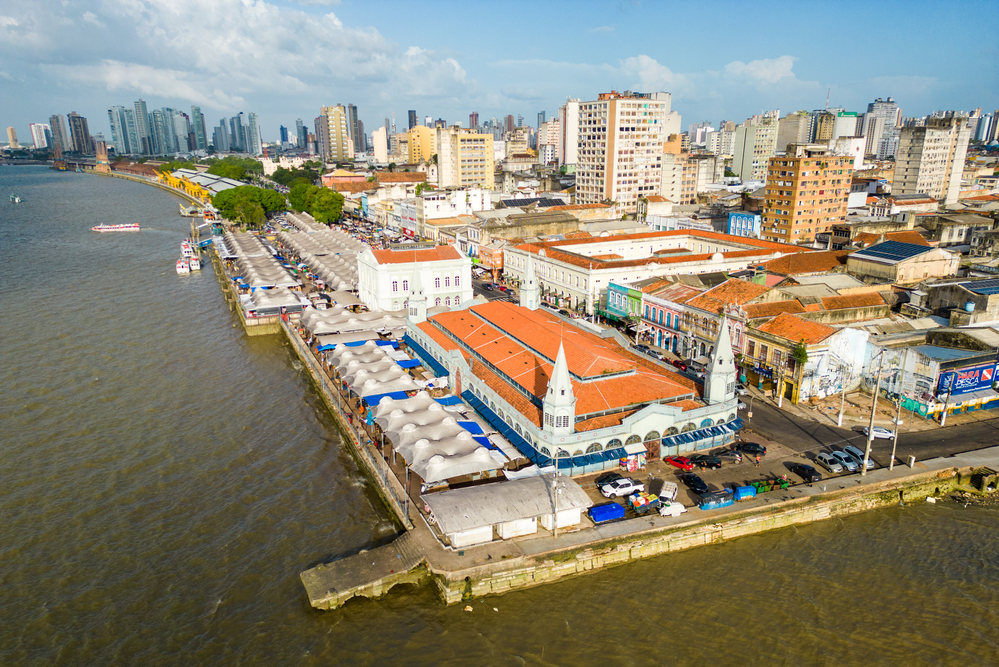
2. Feliz Lusitânia Complex
The Feliz Lusitânia Complex is one of the most important tourist spots in Belém do Pará. Located in the historic center of the city, on the banks of Guajará Bay, it brings together colonial buildings that tell the story of the founding of the capital of Pará. The complex includes some of the most important buildings from the colonial era. Among them are:
- Forte do Presépio: Built in 1616 by the Portuguese, it marks the founding of Belém. The fort was erected to protect the city from foreign invasions and today houses a museum with historical artifacts.
- Catedral da Sé: One of the most important churches in Pará, with a beautiful marble altar and baroque architecture. It is one of the main settings of the Círio de Nazaré.
- Casa das Onze Janelas: A former colonial mansion that has become a cultural space with art exhibitions and a restaurant with an incredible view of the river.
- Museum of Sacred Art: Housed in the former Jesuit College, it gathers religious works from the 17th and 18th centuries.
The Feliz Lusitânia Complex is a true dive into the history of Belém. With its preserved buildings and beautiful landscapes, it is an unmissable tour for those visiting the city!
3. Praça do Relógio
This historic square is a great spot for taking photos and observing the city’s colonial architecture. It is one of the most iconic points in the historic center of Belém do Pará. Located next to Ver-o-Peso Market, this square draws attention with its beautiful central clock, which has become a symbol of the city.
The large clock that gives the square its name was a gift from England in the early 20th century. Its imposing structure and European style contrast with the surrounding Amazonian scenery, becoming a reference point for locals and tourists. The square has undergone renovations over the years but continues to preserve its historical importance.
What to Do at Praça do Relógio?
- Photograph: The square is an excellent place to take photos, with the clock in the background and Ver-o-Peso Market next to it.
- Stroll through the historic center: The square is close to other tourist spots, such as the Feliz Lusitânia Complex and Theatro da Paz.
- Appreciate the local movement: In the morning, the square is full of life, with vendors, sellers, and visitors circulating around.
Visiting Praça do Relógio is getting to know a piece of Belém’s history. If you are exploring the city center, be sure to stop by!
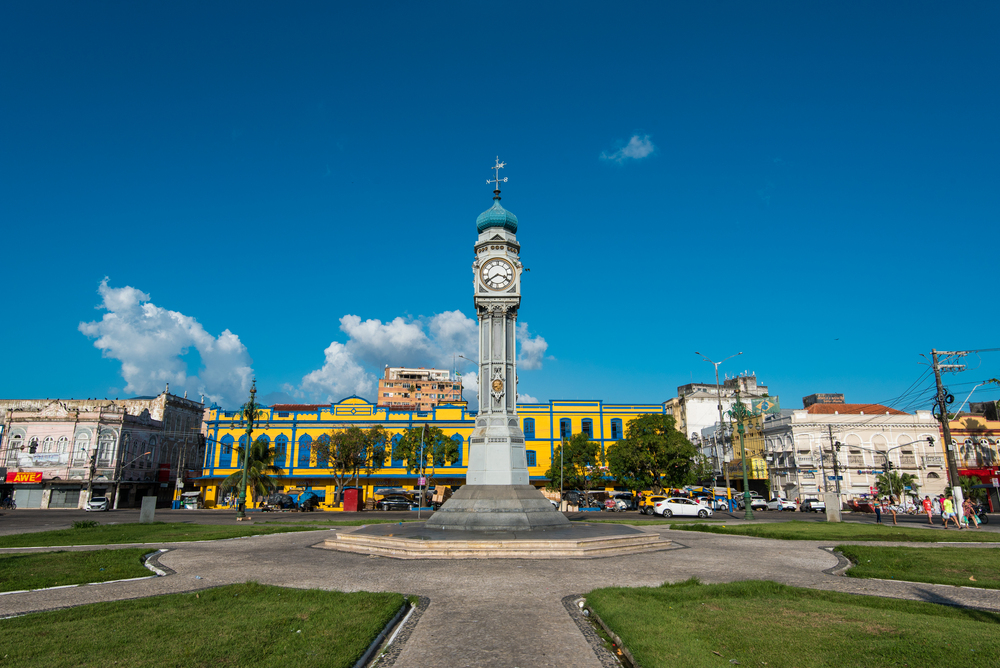
4. Theatro da Paz
Inspired by 19th-century European theaters, Theatro da Paz is one of the most beautiful buildings in the city. It is worth taking a guided tour to see its luxurious halls and fascinating history. It is one of the most imposing and beautiful buildings in Belém do Pará. Located in Praça da República, in the city center, it was inaugurated in 1878 during the rubber boom, a period of great wealth in the Amazon region. Inspired by European theaters, its grand architecture reflects the luxury of the time.
The theater was built in neoclassical style, with imposing columns and refined details. Its interior impresses with crystal chandeliers, ceiling paintings, and a breathtaking noble hall. The acoustics of the place are also incredible, making any show a unique experience.
What to Do at Theatro da Paz?
- Guided tours: The theater offers tourist visits, where you can see its halls, learn about its history, and understand its cultural importance.
- Attend a show: Theatro da Paz hosts opera, ballet, theater, and musical concerts, providing a sophisticated and unforgettable program.
- Photograph: The building is one of Belém’s postcards and yields beautiful photos.
Visiting the majestic Theatro da Paz is diving into Pará’s history and culture. Don’t miss the chance to see this national heritage!
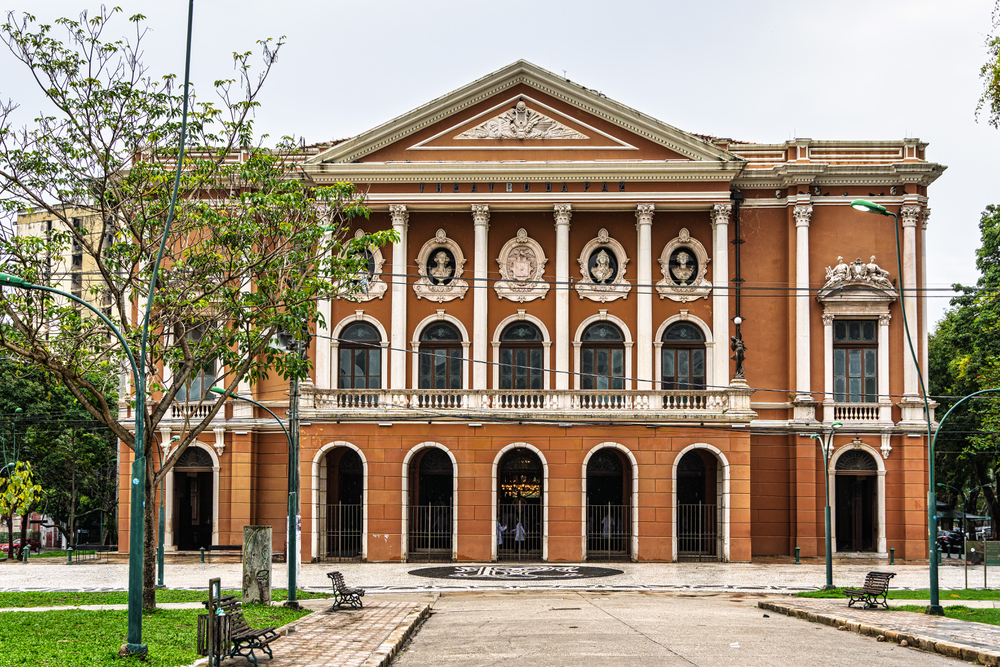
5. Rua dos Mercadores
This narrow and charming street has well-preserved colonial buildings and houses craft shops and cozy cafes. Walking there is a great way to feel the historical atmosphere of the city. Rua dos Mercadores is one of the oldest streets in Belém do Pará, located in the historic center of the city. Originating from the colonial period, this street was an important commercial point where merchants traded products from the interior of the Amazon and other parts of the world.
During the 18th and 19th centuries, Rua dos Mercadores was bustling with Portuguese, Jewish, and Arab merchants who helped shape the local economy. Today, it preserves part of this history in its colonial buildings and old facades, which contrast with the modern movement of the city.
What to Do on Rua dos Mercadores?
- Explore the colonial architecture: Walking down the street is a journey back in time, with historic buildings and constructions that hark back to the past.
- Visit shops and markets: Even today, the street maintains its commercial spirit, with traditional shops selling handicrafts, medicinal herbs, and other typical regional products.
- Appreciate the historical atmosphere: Rua dos Mercadores is part of the Feliz Lusitânia Complex and is close to attractions such as Forte do Presépio and Casa das Onze Janelas.
Strolling down Rua dos Mercadores is getting to know a living piece of Belém’s history. If you like culture and tradition, this is an unmissable destination!
6. Estação das Docas
Estação das Docas is one of the most charming places in Belém do Pará. Located on the banks of Guajará Bay, this revitalized area transformed old port warehouses into a modern leisure and cultural center. It is a tourist complex that hosts cultural performances, shops, restaurants, and bars, making it one of the city’s main postcards.
Estação das Docas was originally built in the early 20th century to handle the flow of goods arriving at the port. In the 1990s, the space underwent a revitalization process and today is one of Belém’s main tourist spots, combining history, culture, and entertainment.
What to Do at Estação das Docas?
- Walk along the waterfront: The station’s external area offers an incredible view of the bay and is perfect for a leisurely walk by the water.
- Visit the museums: Estação das Docas houses the Belém Art Museum (MABE) and the Círio Museum, where you can learn more about Pará’s art and culture.
- Eat at the gastronomic space: The place has great restaurants and kiosks that serve typical dishes, such as the famous fried fish and açaí.
7. Basílica de Nossa Senhora de Nazaré
The Basílica de Nossa Senhora de Nazaré is one of the main symbols of Belém do Pará and one of the most visited places in the city. Located in the Nazaré neighborhood, in the center of Belém, it is an important point of faith and devotion for the people of Pará and the thousands of pilgrims who visit the city, especially during the Círio de Nazaré, the largest religious festival in Brazil.
The basilica was built in the 19th century, but the worship of Nossa Senhora de Nazaré dates back to the beginning of colonization. Its neoclassical construction impresses with its imposing facade and details that reflect the city’s historical wealth. The main altar, in baroque style, is one of the main attractions, being a place of intense devotion for the faithful.
What to Do at Basílica de Nossa Senhora de Nazaré?
- Visit the chapel and altar: See the image of Nossa Senhora de Nazaré, which attracts thousands of devotees annually.
- Attend masses and celebrations: The basilica holds daily masses and special events during the Círio.
- Appreciate the architecture: The basilica is an example of beauty and history, with a grand and detailed structure.
The Basílica de Nossa Senhora de Nazaré is the religious heart of the city, a place of spirituality and culture, fundamental to understanding the faith and tradition of Belém.
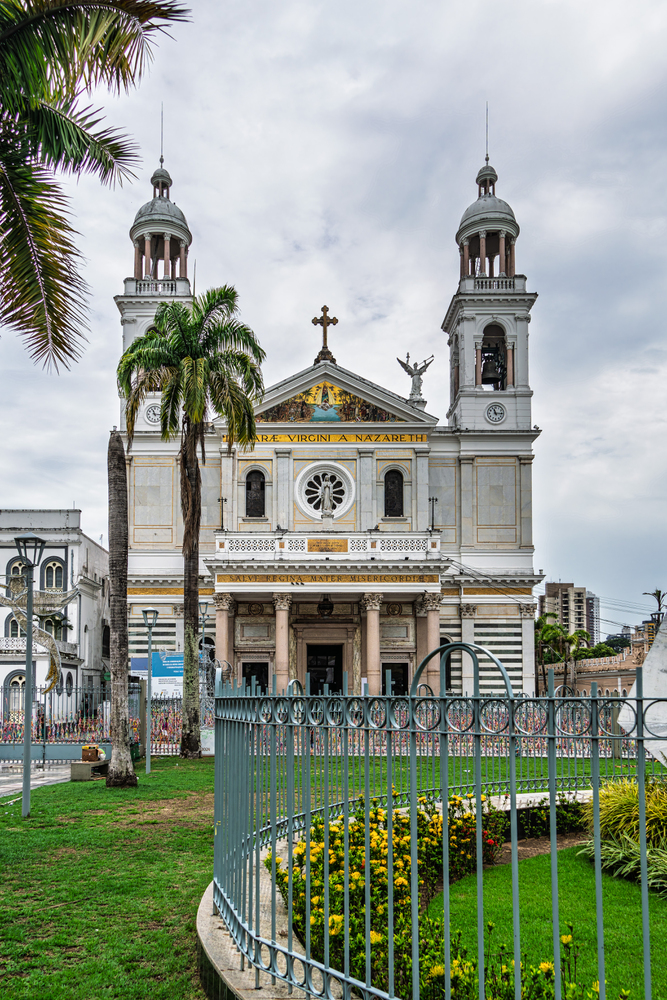
8. Mangal das Garças Park
Mangal das Garças Park is one of the main natural attractions in Belém do Pará, offering a unique experience of contact with nature in the heart of the city. Located on the banks of Guajará Bay, the park is a haven of tranquility, perfect for those who want to get to know the typical fauna and flora of the Amazon region.
The park consists of rich native vegetation and is home to various bird species, including the famous herons, which can be seen everywhere. Additionally, the site has trails, viewpoints, and even a lake with boats for peaceful rides.
One of the park’s main attractions is the Sea Museum, which features exhibitions on marine biodiversity and the region’s history. The Mangal Viewpoint offers an incredible panoramic view of the city and the river.
What to Do in the Park?
- Walk the trails: Stroll through the green areas and observe the local fauna.
- Visit the museum: Learn about the Amazon’s biodiversity.
- Enjoy the viewpoint: Take amazing photos of the panoramic view.
Mangal das Garças Park is an ideal place for those looking for things to do in Belém, escaping the city’s hustle and connecting with Amazonian nature.
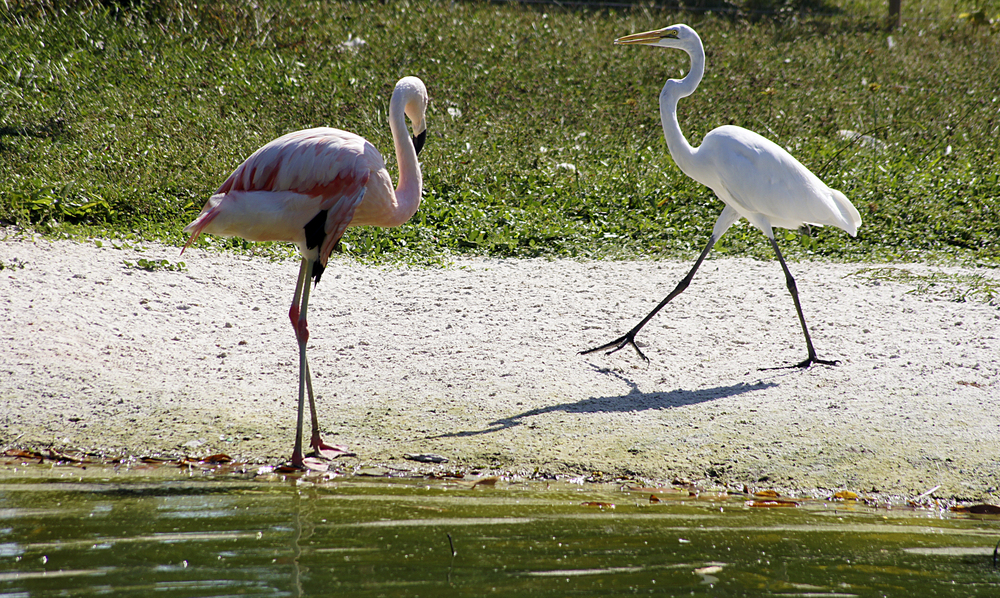
9. Fortaleza do Presépio
Fortaleza do Presépio is one of the most important historical landmarks in Belém do Pará. Located in the city center, on the banks of Guajará Bay, the fortress was built in 1616 by the Portuguese to protect the city from foreign invasions. Its name refers to the original “presépio,” which symbolized divine protection.
The fortress was erected to ensure the region’s security, and its structure has been modified over the centuries. Today, it maintains its imposing aspect, with stone walls and a privileged view of the river and Belém’s historic center. The site also houses the Pará Art Museum (MUPA), which exhibits various works of art and historical artifacts from the region.
What to Do at Fortaleza do Presépio?
- Visit the museum: See exhibitions on the history and art of the Amazon.
- Explore the architecture: Admire the construction and the view from the top of the fortress.
- Learn about the history: The fortress has informative plaques detailing its importance for the founding of Belém.
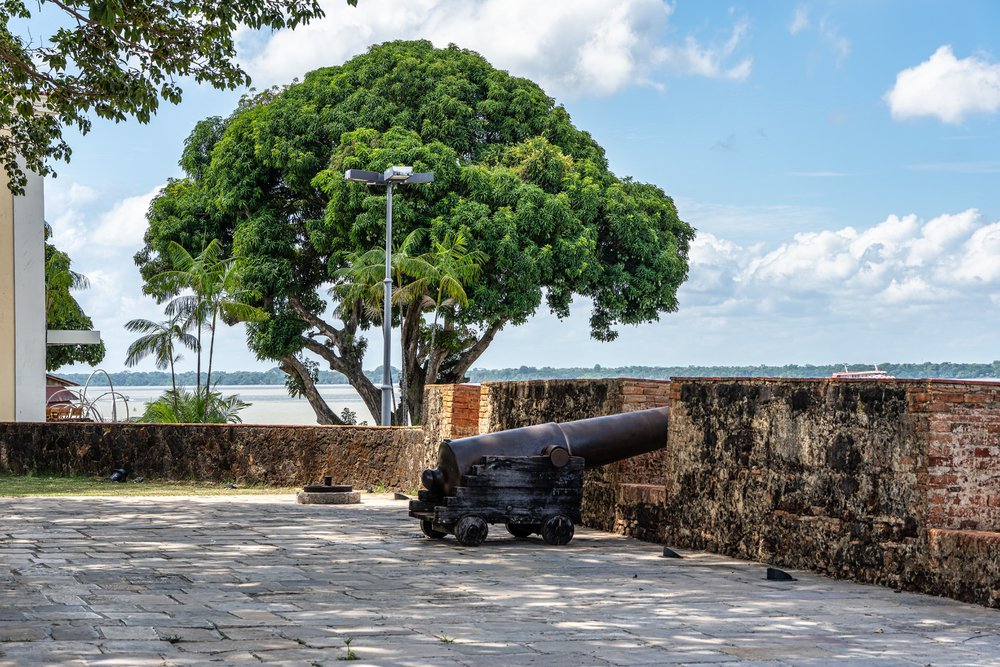
Conclusion
Belém do Pará is a unique destination that mixes history, culture, and nature in an unforgettable experience. The city, known as the “Gateway to the Amazon,” offers visitors a deep dive into the region’s rich biodiversity, as well as a historical heritage that dates back to the colonial era.
Among colonial mansions, vibrant markets, and beautiful churches, the city reveals its roots and enchants those who visit it. The city is also an invitation to savor the mouth-watering local cuisine.
Additionally, Belém offers an immersion in Amazonian culture, with its traditional festivals and welcoming human warmth. For nature lovers, Mangal das Garças Park and nearby beaches are perfect for relaxing and appreciating the region’s natural beauty. Belém do Pará is an unmissable destination for those who want to experience the true essence of the Amazon. If you seek culture, gastronomy, and nature, be sure to include Belém in your itinerary!
